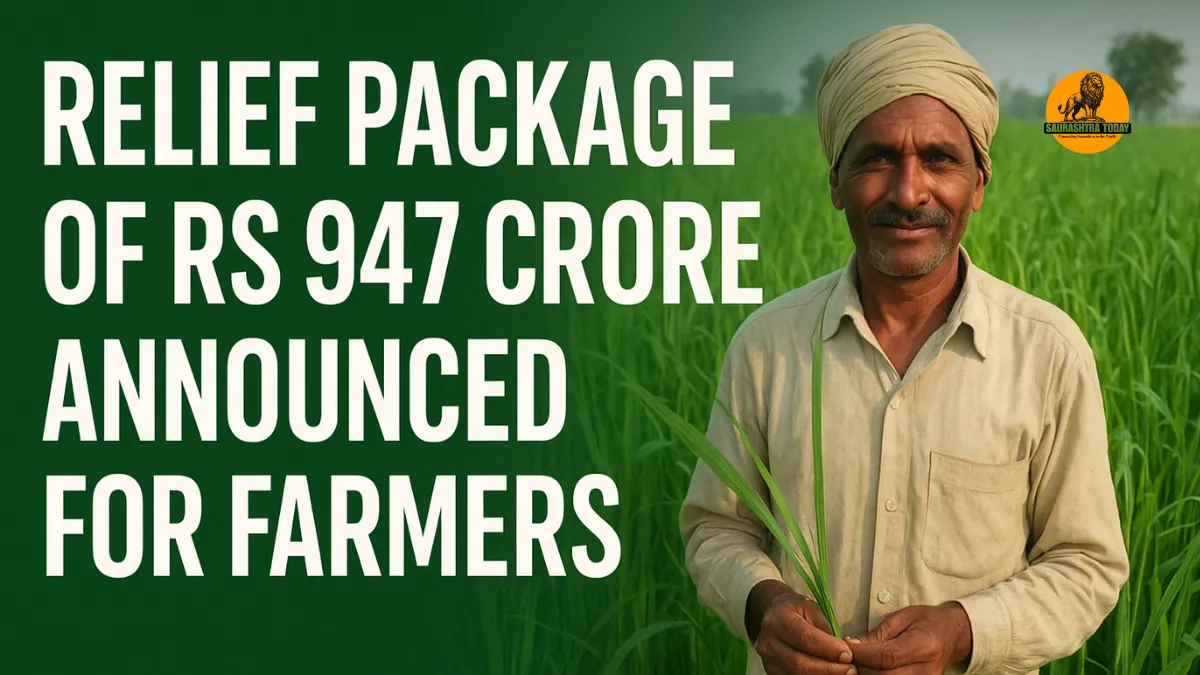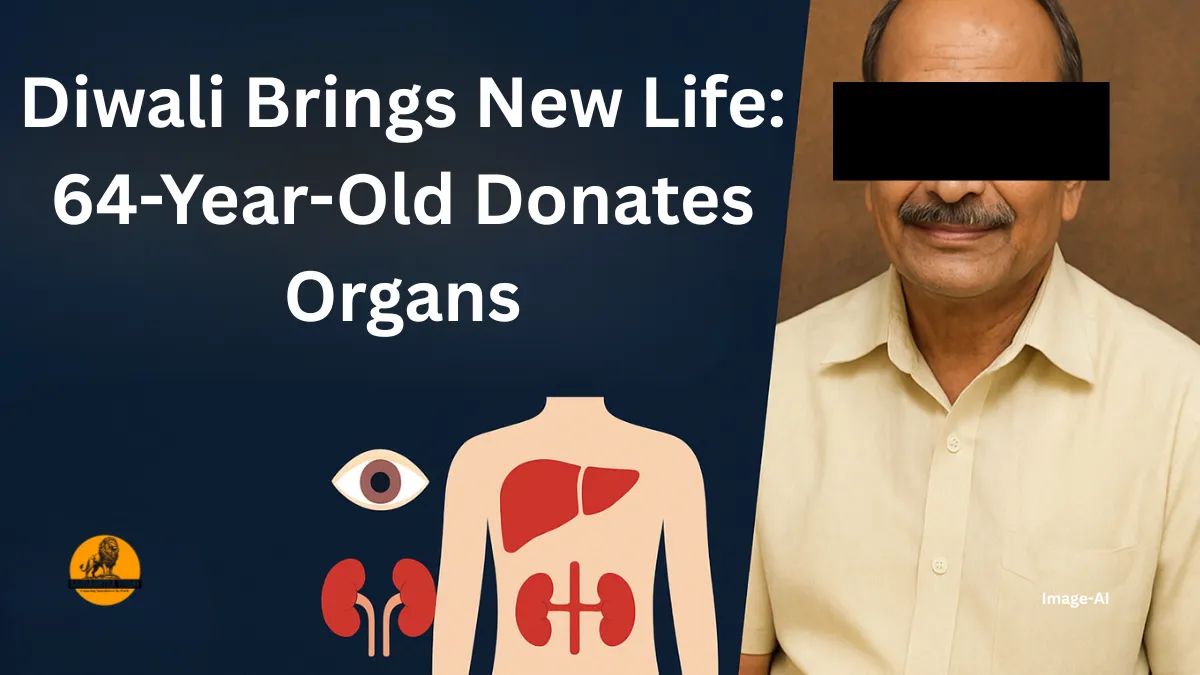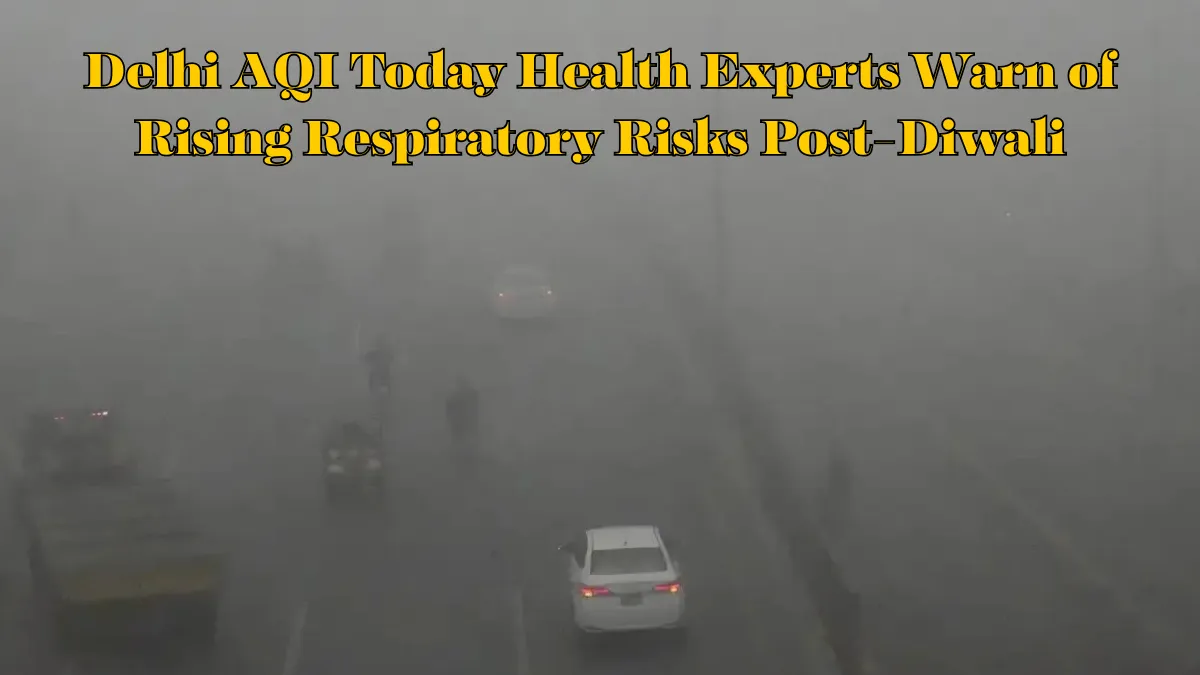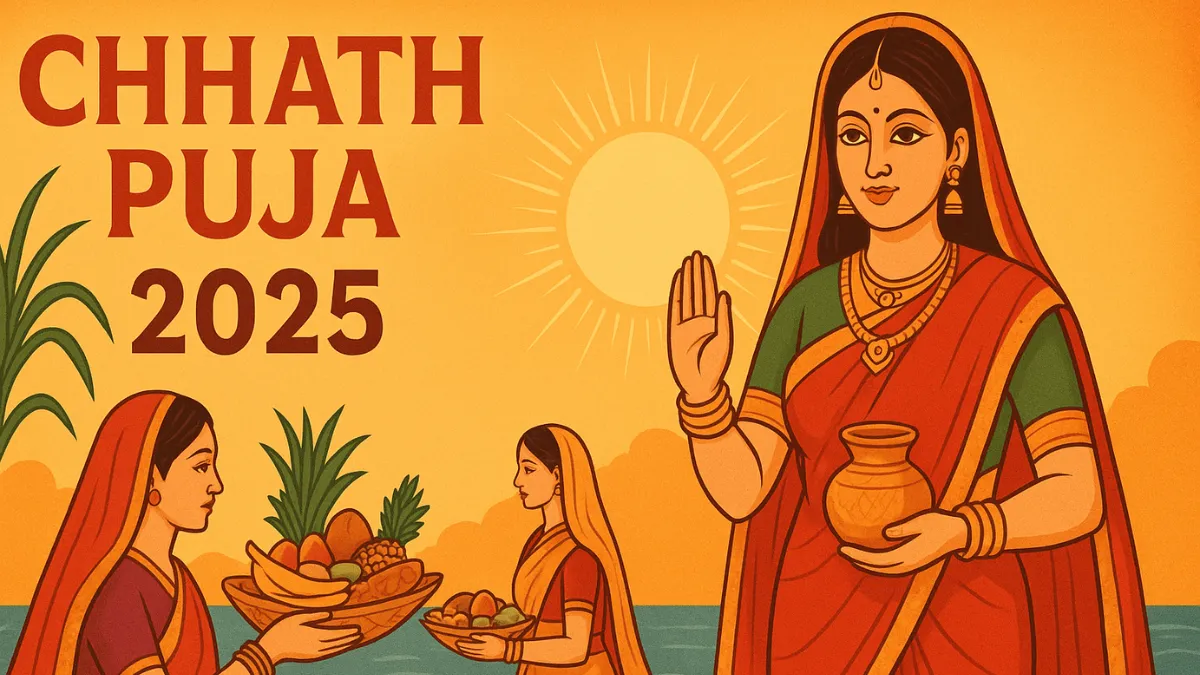Gujarat Government Steps Up with Major Financial Assistance to Support Rain-Affected Farmers
In a significant move to aid the agricultural community, the Gujarat government has announced a Relief package of Rs 947 crore for farmers who suffered massive crop losses due to heavy rains in August and September 2025.
The state administration confirmed that this financial support aims to help farmers recover from the widespread monsoon destruction that severely impacted multiple districts including Junagadh, Panchmahal, Patan, Kutch, and Vav–Tharad.
This major relief decision will benefit thousands of small and marginal farmers whose crops were damaged during the Kharif season. The compensation will be distributed through the State Disaster Response Fund (SDRF), along with additional financial support from the state’s budget.
800 Villages Affected Across Five Key Districts
According to official data, nearly 800 villages across 18 talukas have reported extensive crop damage.
Farmers in these regions lost a variety of seasonal crops, such as cotton, groundnut, millet, paddy, vegetables, fodder, and horticultural produce.
Continuous heavy rainfall and subsequent flooding left farmlands waterlogged, leading to large-scale agricultural destruction.
Following a detailed on-ground assessment, the Gujarat government finalized a Rs 947 crore relief package to provide immediate assistance to the affected farmers. The goal is to ensure that every eligible farmer receives timely financial help to rebuild their livelihoods.
Farmers with 33% or More Crop Damage to Receive Compensation
Under the newly announced Relief package of Rs 947 crore, farmers who have experienced 33% or more crop loss are eligible for compensation.
The aid has been structured based on the type of crop—rainfed, irrigated, or horticultural—and each farmer will be compensated for up to two hectares of affected land.
Compensation for Rainfed Crops
Farmers growing rainfed crops will receive:
- Rs 3,400 per hectare from the SDRF, and
- Rs 3,400 per hectare from the state’s share,
making a total of Rs 6,800 per hectare, capped at two hectares per farmer.
Compensation for Irrigated Crops
For irrigated crop cultivators, the compensation includes:
- Rs 3,710 per hectare under SDRF norms, and
- Rs 3,500 per hectare from the state share,
bringing the total relief amount to Rs 7,210 per hectare.
Compensation for Horticulture Crops
Farmers engaged in horticulture will get:
- Rs 3,720 per hectare through SDRF assistance, and
- Rs 3,500 per hectare as the state’s contribution,
resulting in Rs 7,220 per hectare, again with a two-hectare limit.
These compensations will directly reach farmers’ bank accounts after verification, ensuring transparency and accountability in the distribution process.
Extra Financial Aid for Flood-Affected Vav–Tharad and Patan Districts
In addition to crop loss compensation, the state government has announced special aid for the severely flood-affected regions of Vav–Tharad and Patan.
Due to prolonged waterlogging, farmers in these areas not only lost crops but also suffered soil erosion and land degradation, making the next sowing season uncertain.
To help restore farmland productivity, the Gujarat government will provide Rs 20,000 per hectare for land rehabilitation and soil improvement under a special relief allocation.
Each eligible farmer can receive this additional support for up to two hectares of affected land.
Officials emphasized that this initiative will enable farmers to revive their land quickly and resume agricultural operations before the next crop cycle begins.
Transparent and Swift Implementation Process
State authorities have assured that the entire compensation process will be swift, transparent, and fully compliant with SDRF guidelines.
District-level agricultural officers are already conducting field surveys and verification of claims to identify eligible beneficiaries.
Once verified, funds will be transferred directly to farmers’ bank accounts through Direct Benefit Transfer (DBT) to avoid any delays or leakages.
The government aims to complete disbursement within the next few weeks, ensuring timely relief before the Rabi season begins.
According to a senior official from the Agriculture Department,
“Our priority is to provide immediate financial assistance to the farmers so they can recover from the heavy monsoon impact and continue their agricultural activities without additional debt pressure.”
Relief Package Reflects Government’s Commitment to Farmer Welfare
The Relief package of Rs 947 crore announced for farmers highlights the Gujarat government’s strong commitment to protecting and empowering the agricultural sector—the backbone of the state’s economy.
Over the past few years, Gujarat has faced recurring monsoon irregularities, but the state has consistently introduced relief measures and innovative irrigation schemes to minimize farmer losses.
Officials have reiterated that this relief effort aligns with the government’s broader vision of rural resilience, sustainable farming, and disaster preparedness.
The package not only provides immediate aid but also encourages farmers to restore confidence and rebuild their livelihoods after one of the most challenging monsoon seasons in recent years.
Breakdown of the Relief Package at a Glance
| Crop Type | SDRF Share (₹/Hectare) | State Share (₹/Hectare) | Total Relief (₹/Hectare) | Maximum Coverage |
|---|---|---|---|---|
| Rainfed Crops | 3,400 | 3,400 | 6,800 | 2 hectares |
| Irrigated Crops | 3,710 | 3,500 | 7,210 | 2 hectares |
| Horticulture Crops | 3,720 | 3,500 | 7,220 | 2 hectares |
| Land Restoration (Vav–Tharad & Patan) | — | 20,000 | 20,000 | 2 hectares |
Impact on the Rural Economy
Agriculture remains the lifeline for millions in Gujarat, and natural calamities like heavy monsoons often disrupt both income and food security.
This Rs 947 crore relief initiative is expected to rejuvenate the rural economy, especially in areas heavily dependent on seasonal crops.
By focusing on both immediate compensation and long-term soil recovery, the government has taken a balanced approach toward disaster management.
Experts suggest that such timely interventions prevent farmers from falling into cycles of debt and distress migration, strengthening the overall rural fabric.
Future Measures and Long-Term Solutions
Alongside immediate compensation, the Gujarat government is implementing preventive measures under its Flood Mitigation and Agricultural Resilience Program.
The plan includes:
- Improved drainage systems in flood-prone districts
- Crop insurance awareness campaigns
- Expansion of micro-irrigation networks
- Construction of check dams and farm ponds for better water management
These steps are aimed at reducing the long-term impact of unpredictable weather patterns and ensuring sustainable agricultural growth.
Also read: Bhupendra Patel Takes Charge of the Cabinet: A New Era Begins in Gujarat
Voices from the Ground
Many farmers welcomed the announcement, expressing relief that the state recognized their hardships promptly.
One farmer from Kutch stated,
“We lost almost our entire groundnut crop this year. This compensation will help us buy seeds and prepare for the next season.”
Agricultural associations have also praised the transparent framework and urged the government to expedite disbursements before the next sowing cycle begins.
Key Takeaways
- Total Relief Amount: Rs 947 crore
- Beneficiaries: Farmers in 800 villages across five districts
- Eligibility: 33% or more crop damage
- Relief Cap: 2 hectares per farmer
- Special Aid: Rs 20,000 per hectare for flood-hit zones
Also read: New Cabinet in South Gujarat: Five Ministers Retained, Two Faces Change
Conclusion
The Relief package of Rs 947 crore announced for farmers in Gujarat marks a decisive step toward agricultural recovery and resilience.
By ensuring immediate compensation, soil restoration aid, and future disaster-prevention plans, the Gujarat government has reinforced its commitment to farmer welfare and sustainable rural development.
This comprehensive relief package is more than financial assistance—it is a message of solidarity with the farming community, ensuring that no farmer is left behind in times of natural adversity.


















